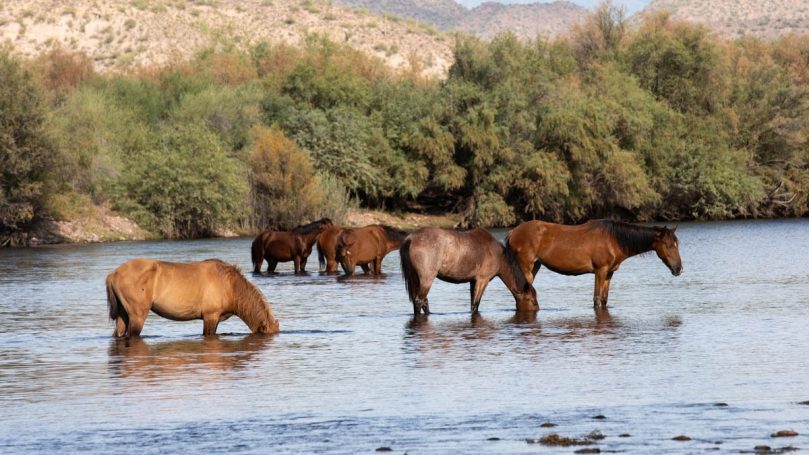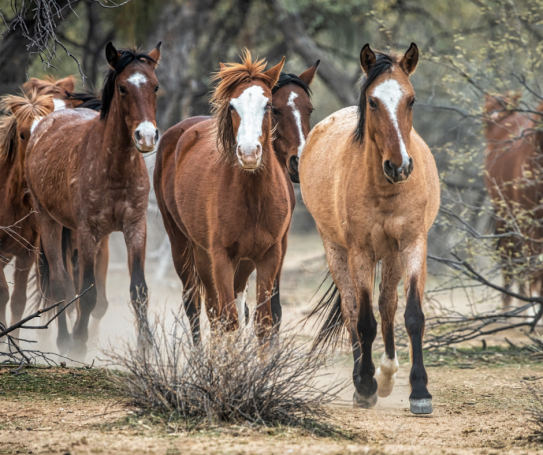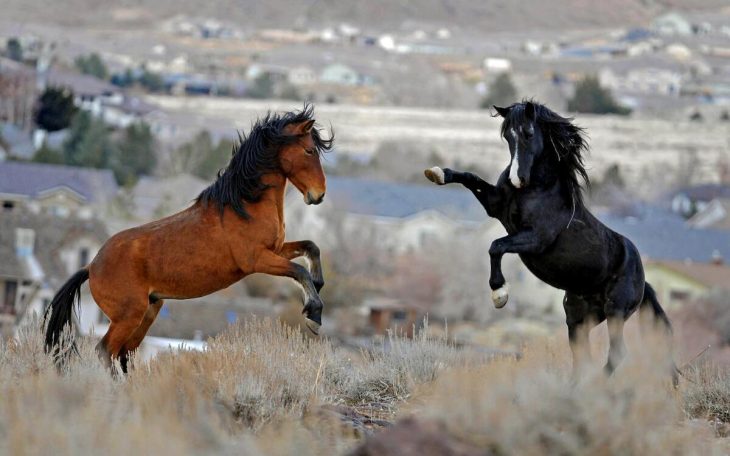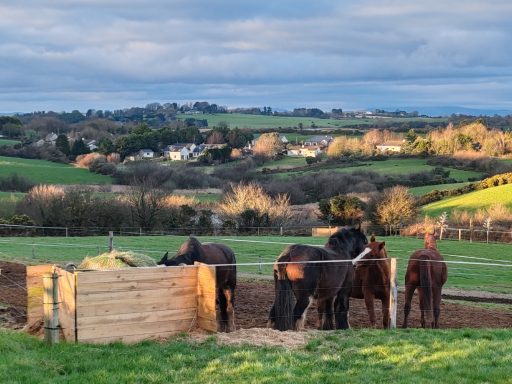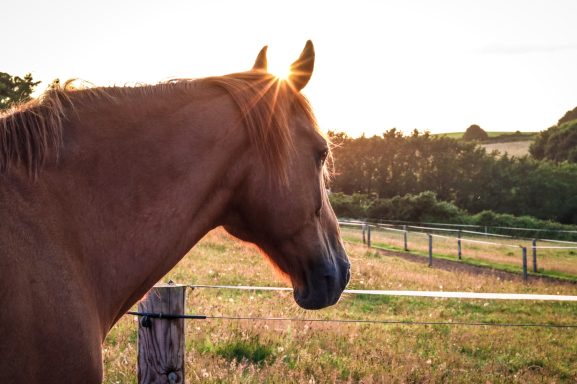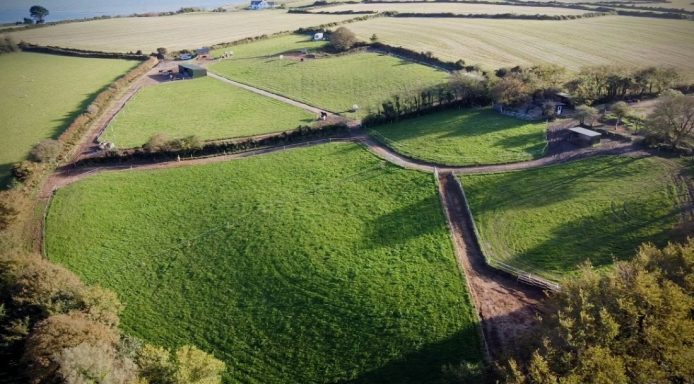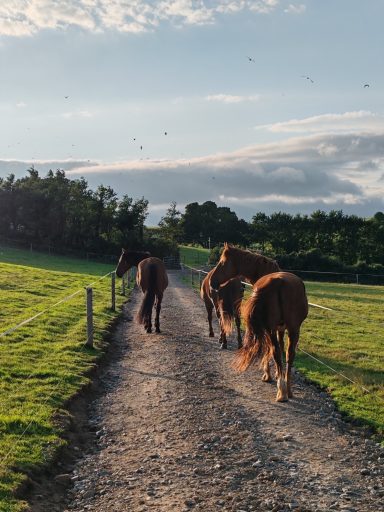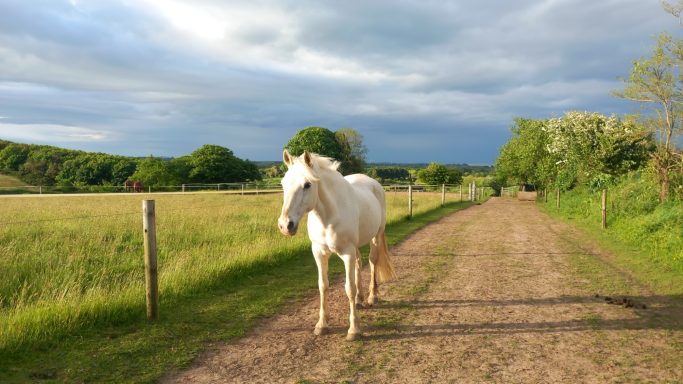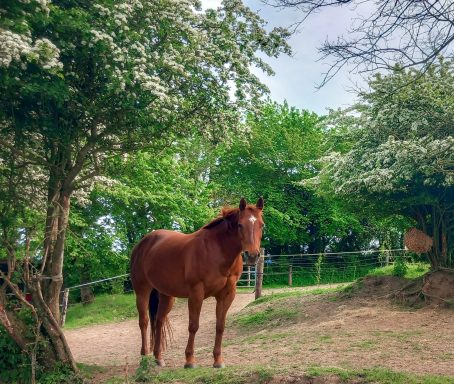The Track System
Back to Nature - Inspired by the Wild Horse
To roam and forage, a wild herd of horses will travel across great distance, over rough mountain terrain and diverse surfaces, such as rocky riverbeds and sandy deserts. They will eat, rest and move - together. Wild horses are driven by the availability of forage and water sources, the lurking danger of predators, the seasons of the year and weather conditions. A herd will form meaningful bonds and relationships, teach one another valuable life lessons, they challenge and protect each other. They have to rely and trust on each others instincts and although they aren't restricted in their space, wild horses call certain areas their home, which they will regularly return to. In the wild, horses tend to travel familiar routes in single file formation, developing tracks across the landscape. Horses are prey animals and instinctively always on the move, only stopping for short periods of time to rest. A track system aims to mimic a horses natural environment and encourages them to carry out this natural behavior and movement pattern as well as a species appropriate feeding behaviour. A wild horses nutrition is believed to be rich and diverse. Originally, they have evolved to search and browse for their food in vast landscapes, up to 18 hours a day. Their digestive system is designed to process small amounts of forage, almost constantly. In addition, they consume a large variety of vegetation, including shrubs, young leaves and bark from trees, herbs, flowers, berries and seeds. They dig and lick the ground for salt and minerals and fish in the river for algae. Wild horses dust and mud bathe, scratch on trees, cool off in the water and groom one another. They are constantly active.
Our Track at Sandy Hills
Sandy Hills Equine Livery is located on a picturesque hill side property, in walking distance to the beach, surrounded by mature hedges and trees. Walkways - tracks - connect feed and water sources as well as shelter. Additonal enrichment stations, provide further destinations which the horses will seek out. They include scratch and stretch areas, soft sand beds for much needed REM sleep as well as self-selection salt, mineral and herb buffets. Over one and a half kilometers of tracks on 10acres are available for the horses to roam and explore.
Feeding Stations
We offer multiple sources of forage to our horses, with high quality, dust free hay being the main one. Our hay stations are spread out across the property encouraging horses to keep moving.
Shelter
In addition to natural shelter provided by trees and hedges, 4 run in shelter are available to our horses, with either sand or cozy miscanthus bedding. Our Run-ins are sturdy and build to provide safe shelter in all weather conditions.
Water Sources
In addition to tap water, we collect rain water which the horses often prefer. They always have the choice. Water sources are spread out across the property.
Tracks
We are still upgrading and improving our surfaces. Currently the tracks are made of natural sub-soil, sand, grit sand, stone mix compacted, river stone
Enrichment Stations
Enrichment stations provide the cherry on top in addition to meeting their basic needs - freedom, forage and friends - and motivate horses to move and travel even further just to seek them out. On our track, they will find:
- scratch poles and trees fitted with different brushes to satisfy the itch
- tractor tires filled with sand to scratch, play and stretch
- mineral water buffet
- saltlicks
- healthy treat and herb station
- fresh herb garden *NEW for 2025
Health Benefits
From head to hoof, paddock paradise track systems will benefit the horse.
A healthy herd dynamic, movement, a species appropriate diet and a natural barefoot trim are the key! Meeting our horses natural needs - freedom, forage and friends - will not only improve their physical fitness, but also their mental health. Horses on track systems are busy bees. They follow their instincts, become creative, independent and confident in themselves and their decision making. A stable herd will develop a routine and dynamic in which each member feels safe. It calmes their nervous system, they become less anxious, obsessed and attached to one individual. Boredom doesn't exist and stable vices become a habit of the past.
Physically, horses on track will become fitter, build more muscle and unhealthy fat deposits will melt off, all due to increased movement and exercise, which they carry out naturally and of free will. A species appropriate diet, with reduced access to lush sugary grass will detox and heal the horse from the inside out. Inflammation will be reduced which will aid to restore gut health and the ability to digest and metabolize nutrition. A well managed track system can prevent the risk of ulcers, colics and metabolic issues such as laminitis. Optimal weight and body condition can be maintained. The cardiovascular and respiratory system will improve. Reduced inflammation and a healthy and functional digestive system result in reduced skin issues and allergies may resolve. The horse will go through a transitioning phase where it'll grow a new, healthier and tighter hoof capsule. It will learn to navigate sure footed over different terrain and surfaces in walk, trot and canter. This process can take 9-12 months. Good things take time, trust and patience. Making the change to paddock paradise track systems is not a holiday for the horse. Its a lifestyle change to improve their health and well-being as well as quality of life.
